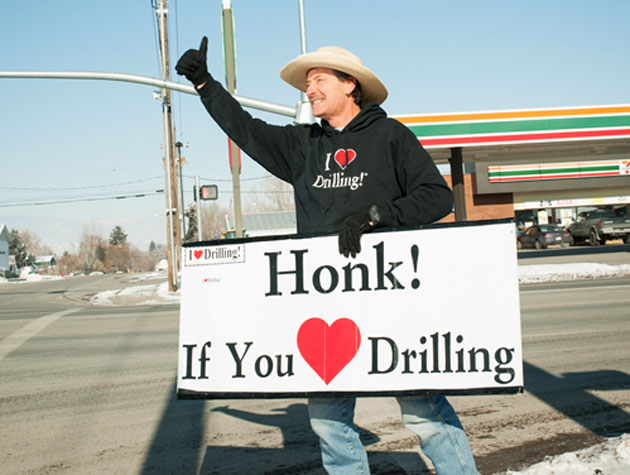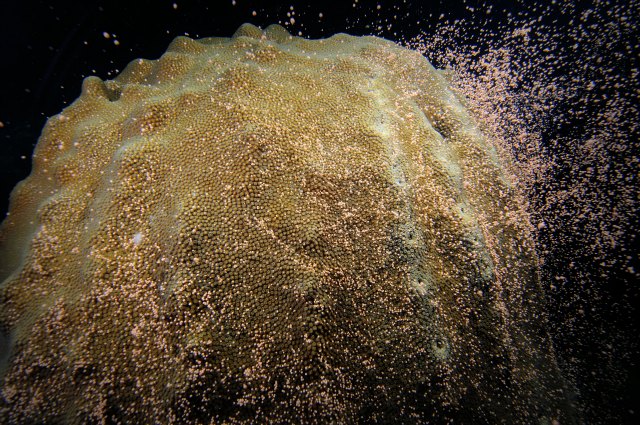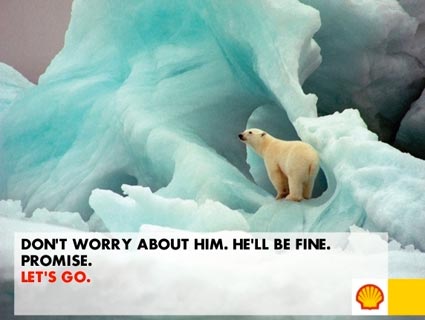
Vernal, Utah<a href="http://www.brianfinke.com">Brian Finke</a>

This story was originally published by OnEarth magazine.
I greet you from the land of the giant white trucks. I sit here, typing away, barricaded behind the door of the last available hotel room—the smell of smoke oozing from every fiber of polyester bedspread and carpet of this non-smoking room—in Vernal, Utah. Outside on the crowded streets hundreds of Rams and Rangers and Silverados prowl, most displaying Texas and Wyoming and Oklahoma plates.
The drivers of the trucks are here for the same reason I am: the boom in drilling for oil and natural gas. The vast, dry lands south of Vernal hold about half of the state’s active rigs and present a veritable smorgasbord of opportunities for energy extraction: shale aplenty, fracking for both oil and natural gas, and even the state’s very own poised-to-open tar sands. Uintah County has been Utah’s main oil producer for more than 70 years. As far back as 1918, National Geographic extolled the area’s potential: “Campers and hunters in building fires against pieces of the rock had been surprised to find that they ignited, that they contain oil.” In other words, what is happening here is no nouveau drilling dalliance, no young sweetheart in first flush, freshly wooed, like the Bakken Field in North Dakota, but an on-again, off-again affair that has been going on for decades.
It is that affair that interests me, with all the salacious details of how Big Oil sidles up to a town, flirts with it, and wins it over. Not to mention what happens if—or, more accurately, when—the wooer decides to ditch the wooed.
In Vernal, population 9,000, evidence of earlier wooing abounds. A quick ride around town reveals Big Oil’s equivalent of a dozen roses or a box of candy. There are shiny new schools and municipal buildings and ballparks. The Western Park Convention Center, covering 32 acres, is one of the largest buildings of its kind in the West. Not every town hosts a golf tournament called Petroleum Days or throws a music festival—like last summer’s weekend-long Country Explosion—cosponsored by a maker of centrifuges and mud/gas separators. Then there’s the Uintah Basin Applied Technology College, a beautiful sandstone building with the streamlined look of a brand-new upscale airport.
On my first visit to Vernal, in the heat of July, I peeked in on a class called Well Control, where a movie was being shown that, unlike the grainy safety films of my youth, had the production values of a Spielberg movie. There were models of oil derricks in the lobby, with the name Anadarko, the giant Texas oil company that is one of the area’s main employers, prominently displayed. In this case, Anadarko’s particular bouquet was a $1.5 million gift for construction and faculty endowment.
It was a short drive over to the rec center, a looming spectacle of oaken beams and concrete and great sheets of glass that revealed within Olympic-size pools and running tracks and climbing walls and squash courts. It looked as if Frank Lloyd Wright and Frank Shorter had gotten together to build their dream house. This building points to one of the less obvious ways the town has been wooed. While Anadarko alone paid $14 million in county property taxes last year, the total income for Vernal and Uintah County from oil and gas far exceeds this number, as a result of sales tax, production taxes, mining royalties, and lease payments on federal land. In other words, the building is not a gift outright but the metaphoric equivalent of Big Oil saying, “Here, honey, go buy yourself something nice.”
On that first day back in July, I drove from the rec center to Main Street, rejoining the white truck parade past classic strip malls and an abundance of hotels. (The Holiday Inn, many locals would tell me, was rented out for a year in advance by Halliburton—before it was even completed.) At the chamber of commerce, when I mentioned concerns about the environmental consequences of the boom, a young woman named Misty smiled at me from behind the counter and said: “It’s an oil field town and everyone makes money from the oil field. Treehuggers should go somewhere else.” From there I climbed back in my car and was drawn like a magnet to a big sign that said: I ? Drilling! It pointed toward a small shop called Covers & Camo that made custom seat covers and was bedecked with stickers and filled with souvenirs, all professing love for the pursuit of gas and oil. Inside, wearing a big straw hat and a T-shirt sporting the same words that adorned the sign outside, was George Burnett, the affable, slightly manic owner. I was surprised to learn that his business really had nothing to do with drilling.
George had opened his first shop, Mr. Trim Seat Covers, back in Provo, Utah, 25 years before. But then the economy started to crater and no one could afford a truck, let alone covers for the seats of a truck. A friend told him about Vernal, where the latest oil and gas boom would mean not just plenty of trucks but truck owners with money to spend. Business was slow at first, but then George found his gimmick: I ? Drilling! He put up his signs, made his T-shirts, and suddenly was the talk of the town, all the drivers honking their horns as they passed his shop. Only a few gave him what he called “the single-finger salute.”
George pointed to his pride and joy: an old black-and-white photo he’d had blown up and made into a poster. It showed three women in hard hats and one-piece bathing suits riding on a truck bed that featured an undeniably phallic 10-foot-tall wooden oil derrick with black papier-maché oil gushing out of its top. The photo was of the 1953 Oil Progress Parade down Main Street, an event that George had exactly recreated the previous summer, right down to the derrick, the one-pieces, and the vintage truck. At the top of the list of funders was Halliburton.
In the Brew Haus
For all Vernal’s riches, there is some fear that boom is becoming bust, with oil prices falling and natural gas abundant. If so, it won’t be the first time. Since its initial boom, in 1948, Vernal has been riding these waves up and down, the boom of the early 1980s crashing hard and then rising again only to crash in the early 2000s. During these dark times, no matter how hard the town ?ed oil, oil didn’t ? them back. If a lesson was to be learned, it would seem to be one of caution, but as soon as oil returned, the town threw itself back into the industry’s big arms. That was the George W. Bush boom, which included a last-minute gift of almost 3,000 more permits. This turned into the Obama boom, which continues to this moment. But for all the bunting and cheers, some people are wary. Did oil really ? them? They had been burned before.
From George’s Covers & Camo to the Dinosaur Brew Haus is less than a 50-yard walk, and I learned there that not everyone in Vernal is as gung ho about oil as George Burnett. The place was bustling as I jockeyed my way through the crowd. My working method as a writer over the past few years has boiled down to the first line of a joke: A man walks into a bar. I’ve found drinking with the locals to be a good way to take a town’s temperature, and, sure enough, before I’d had two sips of beer, I was listening to a tall, bearded man describe the joys of fracking.
“What the eco-types will tell you is that it contaminates the water,” he yelled over the din. “But if you know anything at all about it, you know that the water’s here. And the gas is here.” He held one hand down low and another above to illustrate.
I listened to him for a while, not voicing my doubts, until he got bored with proselytizing and moved on. Almost immediately I found myself talking to the next guy down the bar, who turned out to be a geologist. Though he, too, worked in the oil fields, he was skeptical when I told him the theory I’d just heard.
“That’s great,” he said. “But just ask that guy one question. What happens if there is an earthquake?” He didn’t seem to be actually predicting one as much as tweaking those who spoke with the fervor of certainty.
After a while the crowd thinned out, and I took a seat near the wall, scribbling notes on napkins. Above me was a picture of a rugged man, gray at the temples, obviously a river guide, in a scene of craggy rock and white water. Eavesdropping on the table next to me, I learned that there were still people who had been drawn to Vernal not for oil but for water. Most of the party were river guides, and when I asked about the photo, one of them told me it was a legendary local riverman, Don Hatch, whose son John, exemplifying the town’s strange mix, had gone into the oil business. Misty at the chamber of commerce had said that treehuggers should get out of town, but here was a table full of them, mixing with the roughnecks.
“Nobody graduates from high school in Vernal anymore,” said Jeff Hommel, one of the guides. “They think they don’t need to since they can make $70,000 to $80,000 out in the oil fields.”
Looking at my napkins from the night, I find one name scribbled several times: Herm Hoops. I was told that he was an old-time river rat who, unlike most, was frank about what oil had done to the town. “He spoke out at the last town meeting,” one napkin says. And after that, barely legible: “People wanted to kill him.”
One Man’s Town
I wasn’t able to track down Herm Hoops on that first trip to Vernal, which is one of the reasons I’ve come back. Returning, my first stop was the Dinosaur Brew Haus, where I met a man named Rich, who works out on the oil fields. He contained in one person the odd mix of oil and water I’d noticed on my last visit. An ATV instructor, kayaker, scuba diver, and former ski patrol emergency medical technician, he’d moved west seven years before from upstate New York in search of adventure and opportunity in the booming oil fields, just as earlier adventurous easterners had been drawn westward to search for gold, beaver, silver, uranium, you name it. Rich now spent his days driving from drill site to drill site, where his perfectly metaphorical job was to separate oil from water in the condensate tanks next to the wellheads.
“Some days I don’t see a single person,” he said. “It’s dangerous. When the weather’s bad that red dirt turns to snot. We had five water tankers roll over last year. But it’s by far the best money I ever made in my life.”
In his late 40s, Rich is older than the standard caricature of the oil field worker. He likes Vernal, lives near the rec center, but prefers to get his exercise by exploring the surrounding canyons, lakes, and arches by foot, ATV, and dirt bike. When I told him I had never been on an ATV, he asked if I wanted to go for a ride the next morning, and I, to my own surprise, said yes.
Which is how I ended up trying to tame a wild ATV. Rich said that the shifting and driving were simple, and I’m sure they were to him. But I managed to fall off after only about 100 yards, accelerating when I meant to brake, and then the willful machine decided to run over my leg. It was not, as I first suspected, broken, and I made it a good half hour before falling off again, diving for safety as the ATV turned over.
“You performed a textbook roll,” Rich said. It was the single compliment he would pay me over the course of the ride.

The more I got to know Rich, the more I liked him. Earlier we had hiked up to see Moonshine Arch, and I noted that he, unlike me, did so rapidly and without a single gasp for air. He was a fit, adventurous single man, and I could understand the appeal of heading out to the oil fields to cash in for a while, the way my friends went to Alaska to fish when we were in our 20s. As for the ATVs, Rich again subverted the caricature. Safety-conscious, he outfitted us in helmets and chest pads. We didn’t drink anything stronger than water, and when we stopped he would say, “Isn’t it great to be out here in such a beautiful place?”
If you ask current residents what exactly Big Oil has given them, the answer is usually jobs. And it’s true: jobs have been gained, hundreds of them, and Uintah County has the lowest unemployment rate in the state at 3.9 percent. But most of these jobs are for transient outsiders. Jobs in services, oil and gas mining, and government have all increased dramatically in the past 10 years, but only mining and government pay better than the national average; service wages lag far behind.
For Rich, however, it was a good deal all around. He considered himself a nature lover—”being out in it” was one reason he gave for loving the job. The larger repercussions of what he was doing didn’t concern him. He was simply there to do a job, cash in, get out. What was the big deal?
Herm Hoops, when I finally got to see him later that afternoon, had an answer to that question. After saying good-bye to Rich, I drove out east of Vernal, past a life-size pink dinosaur, to Herm’s house. A big man with a thick beard and an easy manner, he greeted me in his driveway wearing just shorts and a T-shirt despite the afternoon chill.
Part of the big deal, Herm explained, is that by doing his job, Rich makes it hard for others, like Herm, a river rafter, to do theirs.
“When I take people down to raft Desolation Canyon, the single thing they talk about now is the number of oil wells they see. That’s not what they paid for. They paid to get away from it all. Not be in the thick of it. They say oil is good for business. Not for my business.”
We sat in Herm’s living room, a cozy place with a lit Christmas tree, a glass case featuring Civil War figurines, two kittens that crawled all over me, and a fine view of the sun’s late red glow on Split Mountain in Dinosaur National Monument.
“When I first came here in the ’70s, it was a beautiful place,” Herm said. “A lazy Main Street lined with cottonwoods. The old booms had faded, and the two top businesses in town were agriculture and tourism. People came to see the dinosaur quarry at the park. People came to float on the river.”
He held out his large hands, palms up. “And what are we left with now?”
Certainly not tourism. A tourist would be hard pressed to find a hotel room in Vernal. In fact, while oil jobs and the services that support them have been rising, the numbers of people employed in agriculture and recreation have fallen dramatically.
And then there were the busts. Herm remembers the last one. Storage lockers of people’s possessions being auctioned off. Houses foreclosed. He is not against drilling, he told me, but what is lacking is perspective and long-term thinking. The problem is exemplified by the archetypal Vernal high school student who drops out, lured by the chance to make money working in the oil fields, and buys a house, a big truck, some ATVs.
“What happens if that job goes away?” Herm asked. “He is left with no education, many debts.” In fact, at the public meeting where Herm questioned the oil orthodoxy, a boy just like that stood up and said, “If we don’t keep drilling, how will I pay for everything?”
Herm wasn’t trying to drive oil out of town. He was merely suggesting that Vernal proceed with some restraint and consider investing in the future. For that he was greeted with fury, even death threats.
Over the past 40 years Herm had seen Big Oil bring its gifts, and its gifts were shiny. But he had also seen oil and chemicals foaming and floating down the Green River. He had seen rising crime, prostitution, spousal abuse, and a culture defined by the twentysomething males who come to work the oil fields. (Utah has a higher incidence of rape than the national average, and Vernal has a much higher rate than the state as a whole.) Air quality has dramatically worsened; last winter’s ozone levels in the county rivaled those of Los Angeles.
All this has made Herm a little less giddy than most about Vernal’s prospects.
“I’ve been through it before,” he said. “They come into your neighborhood. They change your neighborhood. Then they move away. And we’re left to pick up the pieces and pay the bills.”
As I drove back into town I brooded. I had tried to keep an open mind about the relationship between Big Oil and Vernal, and I couldn’t deny the many obvious benefits that oil money has brought. I’ve even felt at moments, when talking to Rich or George or amid the bustle of the Brew Haus, that there is really nothing wrong with riding a wave, with accepting “reality.” Why be a spoiler at the party?
Maybe because the party always ends.
From Above
I’ve brought a book along on my second trip to Vernal, The Western Paradox, by the Pulitzer Prize–winning historian Bernard DeVoto. Its pages bristle with energy; it insists on being read. DeVoto was an intellectual descendant of Major John Wesley Powell, the famous geologist who, in 1869, became the first European to float down the Colorado River through the Grand Canyon. Both Powell and DeVoto were forerunners of thinkers such as Wallace Stegner, who wrote a brilliant biography of Powell, and Marc Reisner, whose Cadillac Desert tells the dark story of water manipulation in the arid West. Together these writers have created a counter-narrative of the region. DeVoto was writing in the 1940s and 1950s, but the enemies he faced might as easily have been from the 1850s or from today. Those enemies said that the land was vast, and that taking what that vast land had to offer was a westerner’s birthright. That was and remains a hard argument to fight against.
DeVoto didn’t care if it was hard. He had watched too many places be cored out. Too many places where the citizenry was seduced by the dream of riches, only to be left empty in the end. Locals might convince themselves that it was a mutual commitment. We ? each other. But despite the companies’ promises, there was never any true commitment to the places they were emptying of fuels or minerals.
DeVoto asked a simple question: Can you show me a single time when a company didn’t leave after taking all it wanted or needed?
Here in five words is his summary of the extractive industries: “All mining exhausts the deposit.”
Those words are as relevant in 2013 as they were in 1947. But while I admire DeVoto’s sweep and scope, I usually admire it from afar. When the man I am walks into a bar and talks to people, he understands why those people do what they do. They want money for schools, money for big white trucks, money for themselves and their kids. They want petroleum golf tournaments and fancy rec centers. Like most of us, they see things in the short term.
But there are times when the big picture is hard to avoid, and in Vernal I had a rare opportunity. I got to gaze down at the town from far above in a small plane piloted by Bruce Gordon of EcoFlight, a nonprofit organization that sponsors flights over the western landscape. It was a startling experience: what was theoretical became actual. These were the places, these were the fields where the white trucks went during the day before coming back to rest at night in front of all those hotel rooms.
“Most people driving through just see a few sites from the road and have no idea,” Bruce said. “But from up here you can see the extent of it.”
We are fooled by the land’s vastness; we can’t believe it can be ruined. But this is a failure of the imagination. Scar this dry landscape, and the scars remain.
Not 10 minutes outside of Vernal the land quickly rose and grew wilder, with the Green River—Powell’s river and Herm’s—carving beautiful and snakelike through a sere landscape of purple and yellow. All that great, empty, unpeopled space, still looking like, as Wallace Stegner called it, “the geography of hope.”
But on second glance you saw the straight, squared lines that didn’t quite fit in nature, the rectangles that turned out to be the hundreds of drilling pads and evaporation ponds that dotted the area. The land was scarred; in places it looked as if someone had taken a knife to a beautiful woman’s face.
With me in the small plane were two staff members of the Southern Utah Wilderness Alliance, Ray Bloxham and Steve Bloch. “They used to say that the vegetation would eventually reclaim the sites,” Steve said through the headset. “But scientists no longer think so. Not enough water for the vegetation to regrow.”
As the flight continued, down to the Book Cliffs and Desolation Canyon, we saw hundreds more rectangles. Rectangles up in the high, forested mountains where black bear roam in the greatest concentration in the state. Rectangles near the Sand Wash, where rafters who put in to retrace Powell’s journey were now serenaded by an industrial hum. Rectangles near the unique Fremont defensive armaments on rock spires by the river, and rectangles near the largest known Ute petroglyph panel in upper Desolation Canyon.
To get from rectangle to rectangle, the giant white trucks needed roads. So what had once been roadless wilderness was now a spiderweb. These were the roads that my new friend Rich spent his days driving, and they were everywhere. One of them, Seep Ridge Road, will lead to the new tar sands right at the foot of the beautiful and previously isolated Book Cliffs. This particular road will be 49 miles long and paved, the land scraped 100 feet wide to provide for a 55-mile-an-hour, two-lane highway.
The geography of hopelessness. I scribbled those words in my journal. I thought of how Stegner and DeVoto knew that water was the most precious resource of all, and how below me the Green and the White rivers ran through what had been raw wilderness and was now industrial hive.
I asked Steve who owned the land we had looked down at. It was mostly public land, he said, some administered by the Bureau of Land Management and some by the US Forest Service. In other words,we own this land. It belongs to all of us; it’s our American land, our heritage.
You would be wise not to make that case too loudly in Vernal. I wouldn’t want to walk out on my hotel balcony and announce that this land is my land, public land that the oil companies are coring out for profit. “Your land?” most people in Vernal would respond incredulously.
It’s our land, they would counter. Our birthright. And, they might add, if we want to trade our birthright for a climbing wall or a fancy petroleum college, then we damn well will.
It is an argument that is hard to counter. And I have no doubt it will ring out here forever. Or at least until the wooing is over, and Vernal, along with its oil and gas, lies exhausted.















